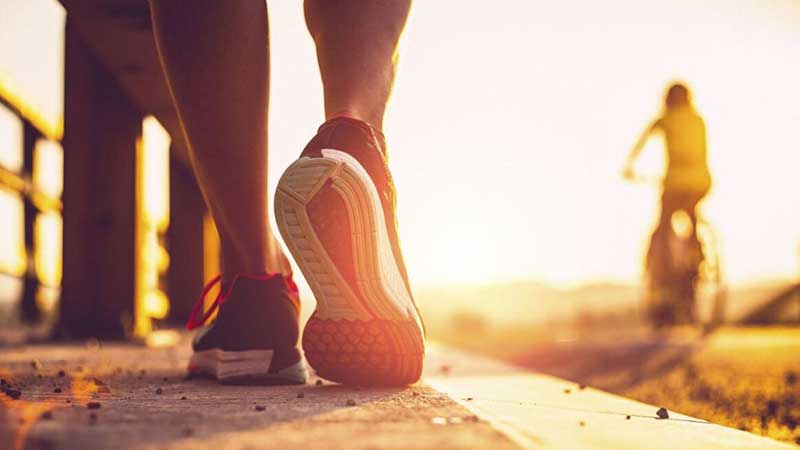The beautiful weather is fantastic motivation to get outside and get moving, but before you break out the exercise gear, make sure you take the right precautions to stay safe and healthy.
Working out in the heat is a lot different from exercising in cool temperatures. With the sun beating down and the temperatures soaring, it’s key to keep in mind the dangers of heat and heat exhaustion. We’ve compiled a few safety tips for summer workouts so you can keep up your physical activity in a healthy way.
Drink Plenty of Water
Exercising in hot weather increases our body temperature. Our body’s natural cooling system can start to fail if we’re exposed to soaring temperatures for too long. The result may be heat exhaustion – that awful fatigue that makes you feel as if one more step could be your last. You may even suffer heat stroke.
Never wait until you’re thirsty to drink water during the scorching summer months! To keep your body completely hydrated, drink 0.5 liter of water at least two hours before your workout and another 0.2 millilitre of water—at a minimum—immediately following your workout. Carry a water bottle with you during your workout and drink at least 0.3 millilitre every fifteen minutes!
Staying hydrated also entails avoiding beverages like soft drinks and coffee before working out. These caffeinated beverages are diuretics and can dehydrate you more. If you had a strenuous workout, make sure to hydrate and restore your electrolytes with water or another nutritious drink!
Easy Up
It’s normal to feel wiped after your workout; however, if you begin to feel ill or unwell, don’t automatically assume it’s because you’re having an off day. Your body’s natural reaction to heat is to sweat, but with temperatures approaching or reaching triple digits, your body can easily become overheated. The same workout you did in the cooler temperatures of the gym can take a lot more energy in the heat of the summer. Take your workouts slow and steady until your body has time to adjust to the heat. Know when to ease up, especially if you’re traveling to hot and humid climates you’re unaccustomed to.
Choose The Appropriate Clothing
Middle-east summers show no mercy when it comes to heat and humidity. Dress for the weather by avoiding unnecessary layers, thick fabrics, and dark colors. Darker and thicker fabrics—like polyester—trap the heat and will only make your outdoor workouts miserably hot.
Keep it light and loose to increase airflow and reduce your body’s temperature. Fill your summer workout wardrobe with light-colored, moisture-wicking fabrics—like cotton! Wearing lighter, brighter colors will also help drivers see you more easily if you’re exercising outside or along the road.
Exercise After Peak Sun Hours
If you like to go for a run or wish to get a good workout through biking, it’s best to take to the outdoors before the sun is at its strongest — between 10am and 4pm. It’s vital to ensure you are protecting your skin should you be in the sun during peak times. Use at least a 30 SPF. Leaving your skin exposed to harmful UV rays from the sun can increase your chances of developing skin cancer as well as wrinkling.
Also, If you decide to exercise at dawn or dusk, ensure you are wearing reflective gear and light clothing so motorists can see you if you run or walk on public roads.

